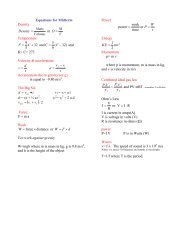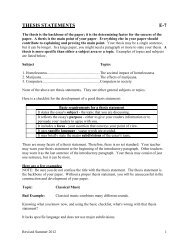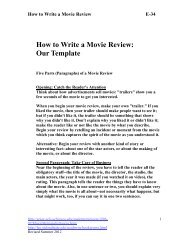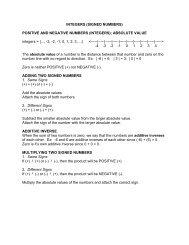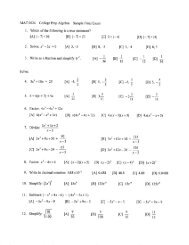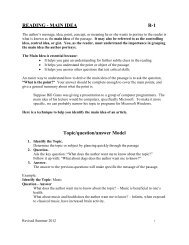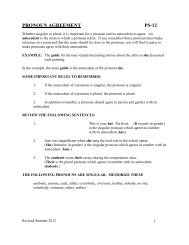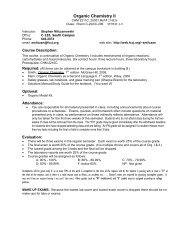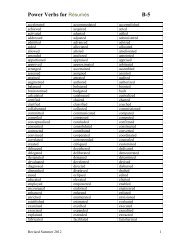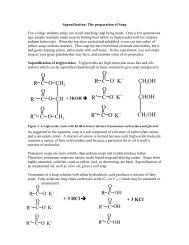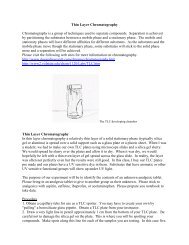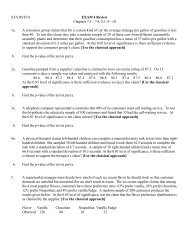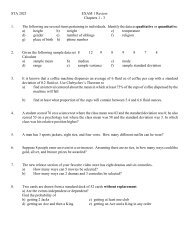PSC1341 Chapter 8 Nuclear Science A. The Nucleus B. Types of ...
PSC1341 Chapter 8 Nuclear Science A. The Nucleus B. Types of ...
PSC1341 Chapter 8 Nuclear Science A. The Nucleus B. Types of ...
Create successful ePaper yourself
Turn your PDF publications into a flip-book with our unique Google optimized e-Paper software.
Carbon Dating<br />
An archeologist extracts a sample <strong>of</strong> carbon from an ancient ax handle and finds that it<br />
emits an average <strong>of</strong> 10 beta emissions per minute. She finds that the same mass <strong>of</strong> carbon<br />
from a living tree emits 40 beta particles per minute.<br />
Knowing that the half life <strong>of</strong> carbon-14 is 5730 years, she concludes that the age <strong>of</strong> the ax<br />
handle is?<br />
Measuring radiation<br />
• Curie :the amount <strong>of</strong> any radionuclide that undergoes 37 billion atomic<br />
transformations a second.<br />
• A nanocurie is one one-billionth <strong>of</strong> a curie.<br />
• A Becquerel is one disintegration per second.<br />
• 37 Becquerel, = 1 nanocurie<br />
• <strong>The</strong> curie is proportional to the number <strong>of</strong> disintegrations per second.<br />
RAD<br />
• RAD (radiation absorbed dose) measures the amount <strong>of</strong> energy actually absorbed<br />
by a material, such as human tissue<br />
• Takes into account the absorbing material. (Bone may absorb better then skin or<br />
muscle).<br />
REM<br />
• Rem (roentgen equivalent man) measures the biological damage <strong>of</strong> radiation.<br />
• REM=RAD*RBE<br />
– RBE (relative biological effect) takes into account that alpha particles are<br />
10 X more damaging than beta particles.<br />
• LD50 = 500 rems<br />
Homework<br />
1. What is the symbol used to describe an alpha particle in nuclear reactions?<br />
(A)<br />
4<br />
He (B)<br />
0<br />
e (C)<br />
0<br />
e (D) ϒ (E) Λ<br />
2<br />
+ 1 − 1<br />
2. Which type <strong>of</strong> radiation has no mass and no charge associated with it.<br />
(A) alpha (B) beta (C) gamma (D) -none <strong>of</strong> the above. (E) All <strong>of</strong> the above.<br />
3. Which type <strong>of</strong> radiation has the least penetrating power?<br />
(A) alpha (B) beta (C) gamma (D) none <strong>of</strong> the above. (E) All <strong>of</strong> the above.<br />
4. Cobalt -60 has a half life <strong>of</strong> 11 minutes. At 11:00 am the doctor has 20 mg, how<br />
much is left if you arrive at 11:22? (A) 20 mg. (B) 10 mg. (C) 5 mg. (D) 2.5 mg.<br />
(E) 0 mg.



